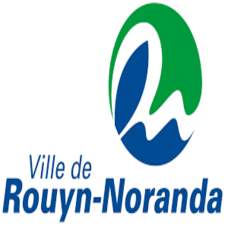RI_537
Type of resources
Available actions
Topics
Keywords
Contact for the resource
Provided by
Formats
Representation types
Update frequencies
status
-

Linear layer of the city's bicycle network. Includes multi-use trails, bike lanes, on-street networks, etc. **Collection context** Manual collection by updating process in collaboration with engineering departments and recreation departments. **Collection method** Computer-aided mapping. **Attributes** * `ID_CYCL` (`integer`): Identifier * `VOI_NAME_CYCL` (`varchar`): Name * `WAY_TYPE` (`varchar`): Type * `PROJECT` (`varchar`): Projected * `NEIGHBORHOOD` (`varchar`): Neighborhood * `DATE_INSTALLE` (`integer`): Installation date * `LENGTH` (`numeric`): Length * `WIDTH` (`numeric`): Width * `SOURCE` (`varchar`): Source * `NOTES` (`nvarchar`): Notes * `DATE_MODIFICATION` (`smalldatetime`): Date of modification * `USER_MODIFICATION` (`varchar`): Modified by * `DATE_CREATION` (`smalldatetime`): Creation date For more information, consult the metadata on the Isogeo catalog (OpenCatalog link).**This third party metadata element was translated using an automated translation tool (Amazon Translate).**
-

Surface hydrographic network of the City of Rouyn-Noranda **This third party metadata element was translated using an automated translation tool (Amazon Translate).**
-

Polygonal layer of the boundaries of parks and green spaces in the city. **Collection context** Official integration or modification notices issued by legal services. Limits managed through regulatory processes. **Collection method** Computer-aided mapping. **Attributes** * `ID_PRC_LIMITE` (`integer`): Identifier * `NAME` (`varchar`): Name * `INDEX_NAME` (`varchar`): Name index * `AREA` (`numeric`): Area * `PERIMETER` (`numeric`): Perimeter * `SOURCE` (`varchar`): Source * `DATE_CREATION` (`smalldatetime`): Created on * `DATE_MODIFICATION` (`smalldatetime`): Modified on * `USER_MODIFICATION` (`varchar`): Modified by * `QUARTIER_TR` (`varchar`): Neighborhood For more information, consult the metadata on the Isogeo catalog (OpenCatalog link).**This third party metadata element was translated using an automated translation tool (Amazon Translate).**
-

Point layer of public and private standpipes. **Collection context** Maintenance by the engineering department. **Collection method** Computer-aided drawing. **Attributes** * `ASSET_ID` (`integer`): Identifier * `NO_BF` (`varchar`): Number * `FIC_JOINT` (`varchar`): Attached file * `BF_TYPE` (`varchar`): Type * `NO_CIVIC` (`varchar`): Civic number * `ODO_COURT_COMPLET` (`varchar`): Full short odonym * `ODO_INDEX_LONG` (`varchar`): Long index odonym * `LOCATION` (`varchar`): Location * `SECTEUR_DESC` (`varchar`): Sector * `MODELE` (`varchar`): Model * `DATE_INSTALLE` (`integer`): Installed on * `ELEV_RADIER` (`numeric`): Radius elevation * `ELEV_SURF` (`numeric`): Surface elevation * `PRESSURE_STAT` (`integer`): Static pressure * `DEBIT` (`integer`): Rate * `NOTES` (`varchar`): Notes * `SOURCE` (`varchar`): Source * `DATE_CREATION` (`smalldatetime`): Created on * `DATE_MODIFICATION` (`smalldatetime`): Modified on * `USER_MODIFICATION` (`varchar`): Modified by * `COORD_XY` (`varchar`): Coordinates * `LOC_ROTATION` (`numeric`): Symbol rotation * `BF_MOUCHE` (`nchar`): Mouth * `DRAINAGE` (`nchar`): Drainage * `DRAINAGE_INSPECTION` (`nchar`): Drainage inspection * `INSPECTE_BY` (`nchar`): Inspected by * `DATE_INSPECTION` (`smalldatetime`): Inspected the * `NFPA_TEXT` (`varchar`): NFPA code * `NFPA_DESC` (`varchar`): NFPA description For more information, consult the metadata on the Isogeo catalog (OpenCatalog link).**This third party metadata element was translated using an automated translation tool (Amazon Translate).**
-

Grouping of footpaths and footpaths on the territory of the city. **Collection context** Technical drawing data integrated into GIS in relation to footpath or footpath rights-of-way. **Collection method** Technical drawing and manual integration based on construction plans or orthophotos. **Attributes** * `ID_SENTIER` (`integer`): Identifier * `SOURCE` (`varchar`): Source * `DATE_CREATION` (`smalldatetime`): Creation date * `DATE_MODIFICATION` (`smalldatetime`): Date of modification * `USER_MODIFICATION` (`varchar`): Modified by For more information, consult the metadata on the Isogeo catalog (OpenCatalog link).**This third party metadata element was translated using an automated translation tool (Amazon Translate).**
-
Data provided shows grants and contributions provided to Canadian firms by National Research Council (NRC) and its Industrial Research Assistance Program (IRAP) between April 1, 2023 and March 31, 2024.
-
Data provided shows grants and contributions provided to Canadian firms by National Research Council (NRC) and its Industrial Research Assistance Program (IRAP) between April 1, 2021 and March 31, 2022.
-

Surface layer of public parking areas in the city. **Collection context** Updated by engineering department technicians. **Collection method** Technical drawing. **Attributes** * `ID_STAT` (`integer`): Identifier * `TYPE` (`varchar`): Type * `NB_CASE` (`integer`): Number of boxes * `NB_CASE_HDP` (`integer`): Number of HDP boxes * `PLACE` (`varchar`): Location * `AREA` (`numeric`): Area * `SOURCE` (`varchar`): Source * `DATE_CREATION` (`smalldatetime`): Creation date * `DATE_MODIFICATION` (`smalldatetime`): Date of modification * `USER_MODIFICATION` (`varchar`): Modified by For more information, consult the metadata on the Isogeo catalog (OpenCatalog link).**This third party metadata element was translated using an automated translation tool (Amazon Translate).**
-

Information for EarlyON program site location name and address in Ontario. This data set contains the information (site name, mailing address, etc.) for all EarlyON program site locations in Ontario. Data includes: * Service System Managers * Name of Location * Address * Suite * Municipality/City/Town * Postal Code * Province Data as reported by Service System Managers (SSMs) to the EarlyON provincial data system. Sites location information are updated/maintained by SSMs.
-

Statements by pest managers. The declaration forms have been submitted since July 5, 2011. The data has a low degree of reliability because it is recorded manually by third parties, i.e. pest managers and *is not subject to any validation by the City of Montréal*.**This third party metadata element was translated using an automated translation tool (Amazon Translate).**
 Arctic SDI catalogue
Arctic SDI catalogue